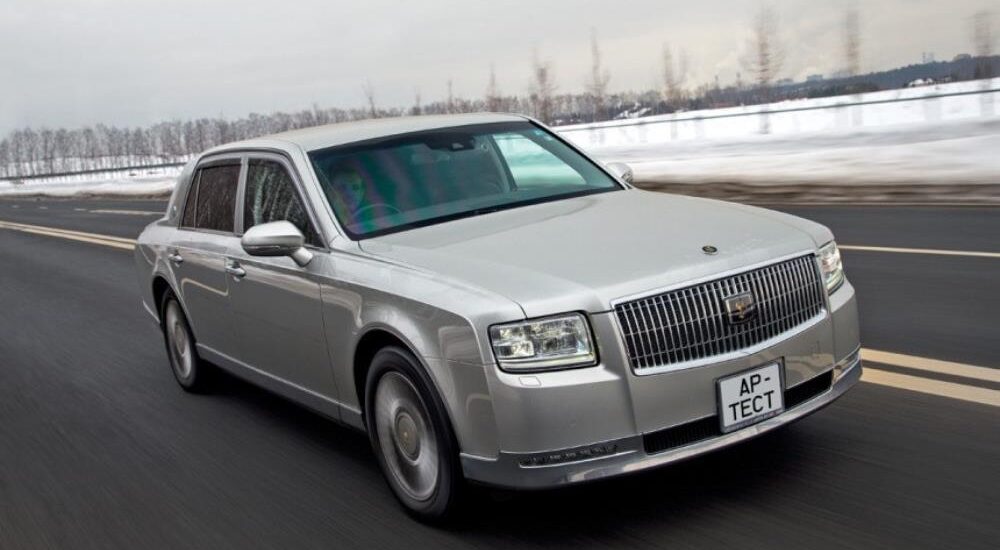Haev. Yes… This is something extraordinary… (Feeling the wardrobe.) Dear, highly esteemed wardrobe! I salute your existence, which has been dedicated to the bright ideals of goodness and justice for over a century; your silent call to productive work has not waned, perpetuating the vitality and faith in a brighter future and nurturing ideals of goodness and social consciousness in our lineage.
A.P. Chekhov, “The Cherry Orchard”
The aroma is unmistakable from the first notes, from the initial steps on the carpets of Tokyo’s Narita airport. It’s a sweetly-spicy fragrance, distinctively un-European. I had nearly forgotten it. But entering the Century enveloped me once again. This is the scent of flagship Toyota. This is the scent of Japan.

The front is sleek as if ironed, the silhouette reminiscent of the old Rolls from the ’70s, with emblems that caricature some plucked bird in gold on black. What kind of bird is it? Rare not only in our lands but also in its homeland: the third and current generation Toyota Century. A collector (and our long-time reader), Ivan, without hesitation, purchased this 2018 model with approximately 80,000 kilometers from Japan. And I find myself… envious?
It’s complicated.
The design seems as if a Chery Amulet dallied with a GAZ-14 Chaika. Quality? The plastics at the top edge of the rear window fit awkwardly, the flung-open doors noticeably vibrate at idle, and the driver’s door handle, reminiscent of an arcade joystick, already shows looseness. Wear is visible on the interior details, the massage function in the rear seats feels as feeble as the pulse of a dying man. And that peculiar chest-of-drawers television for the rear passengers?
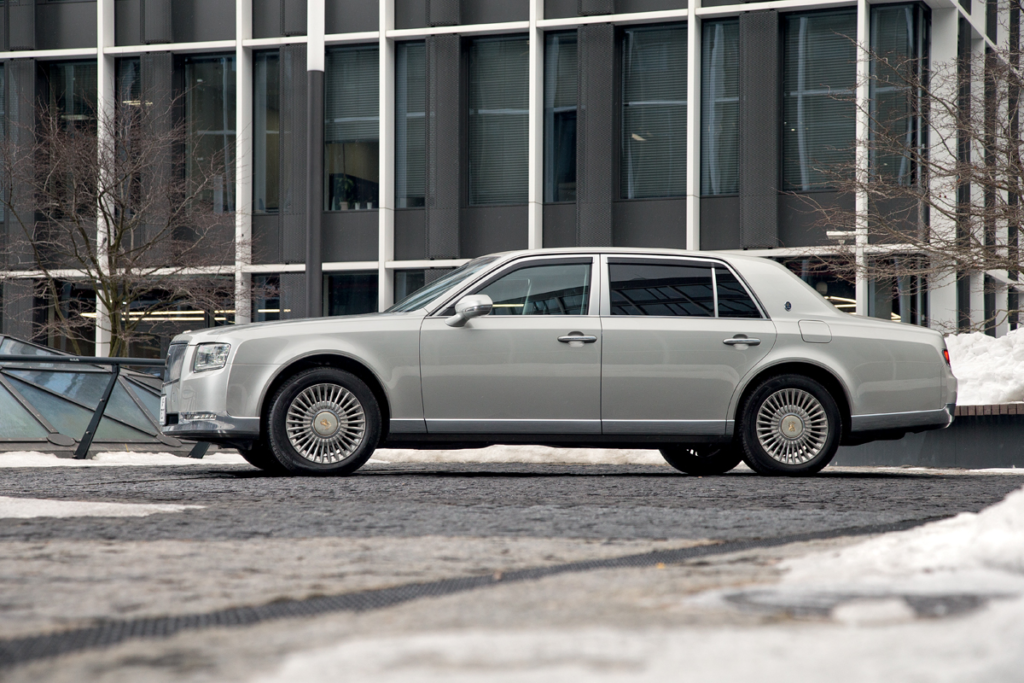
I’ll spare the details about the multimedia system interface; this is Toyota, after all. It’s a tearful embrace.
You encounter, literally everywhere, those typically Japanese nonsensical little things like alien rectangular buttons or an exposed screw in the steering column cover. When engaging reverse, the servo parts the curtains on the rear window with a loud crunch and groan, and the laces on the side windows must be manually pulled aside. Careful handling is advised, lest you rip the spokes from the fragile plastic clips.

For more than half a century, the Century was assembled at the Higashi-Fuji plant of Kanto Auto Works, which had been a Toyota contractor since 1948, and which had existed since 1946. Ivan’s car was also assembled there. Alas, at the end of 2020, the legendary production was closed, and the Century was transferred to the Motomachi plant in Toyota City.

And this is, incidentally, the most expensive Toyota: hand-assembled, limited production of only 50 cars per month, with prices starting from 20 million yen. Currently, that’s approximately $130,000, but back in 2018, when the third-generation model first hit the market, the yen was stronger—$180,000. It’s no small amount, right?
Moreover, in the six years since its production began, the Toyota Century has remained unchanged: the same sedans roll out of the factory gates in Toyota City even today.

If you move the front seat all the way forward (the range is surprisingly small) and fold down the ottoman, you can stretch your legs even without the Century’s traditional optional hatch in the back. But you can only dream of German comfort here.
In the back seat, you reign like on a throne: the seat is positioned higher than in a BMW 7-series, let alone an S-class. Thankfully, there’s ample headroom, and the ceiling trim in the rear differs from that in the driver’s section—simpler in the front. Ivan lamented that this car came with leather seats, and I understand his sentiment, as traditionally, the Century is outfitted with authentically cozy wool upholstery.

The wool upholstery of the rear headliner has a traditional Japanese manji pattern, symbolizing vitality.
But even if you recline the seat fully and stretch out on the fold-out ottoman, true relaxation eludes you. This isn’t like your premium German models with their meticulously designed seating: the headrest is uncomfortable, there’s no lateral support at all, leaving you lying in a somewhat strained position…
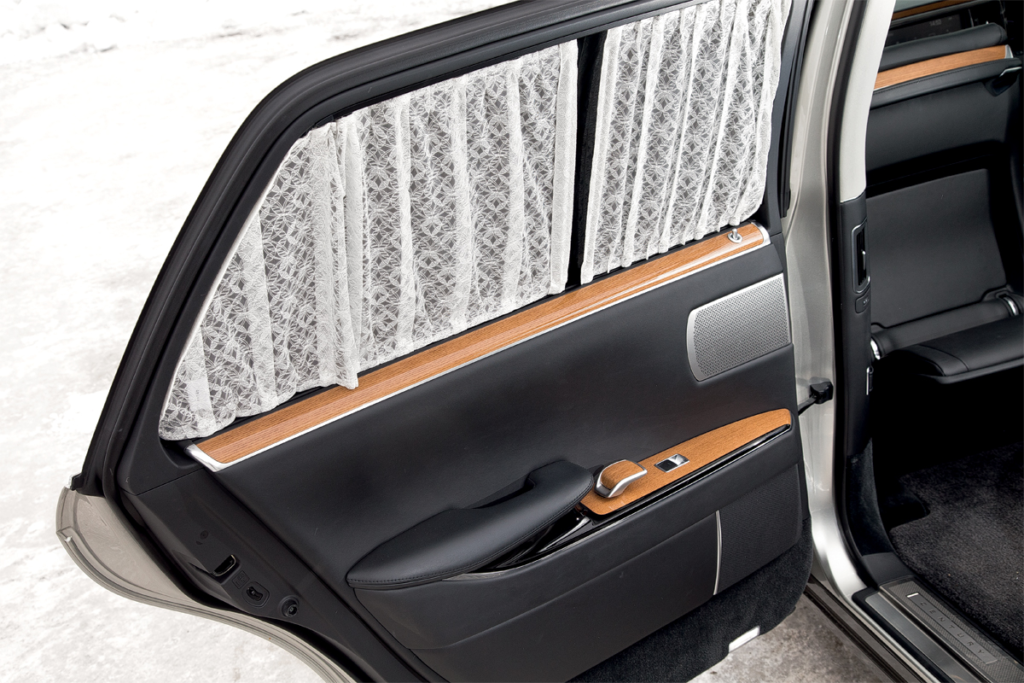
And what about the pride of Japanese engineering—the spring base of the seat? Oh, it’s laughable. Yes, this construction dampens some frequencies more effectively than conventional polyurethane foam, but sometimes it creates a resonance—like when the driver slows nearly to a stop before a “speed bump.” And after crossing, your frail body performs three, or even four, small oscillations. Like jelly on a plate.

Speeding over “speed bumps” is uncomfortable, regardless of the pneumatic suspension setting: you can’t miss the bumps and jolts on the rebound. Where’s the promised imperial sound insulation? The active noise cancellation system should definitely combat tire noise. But no, road noise is as audible as in any ordinary car.
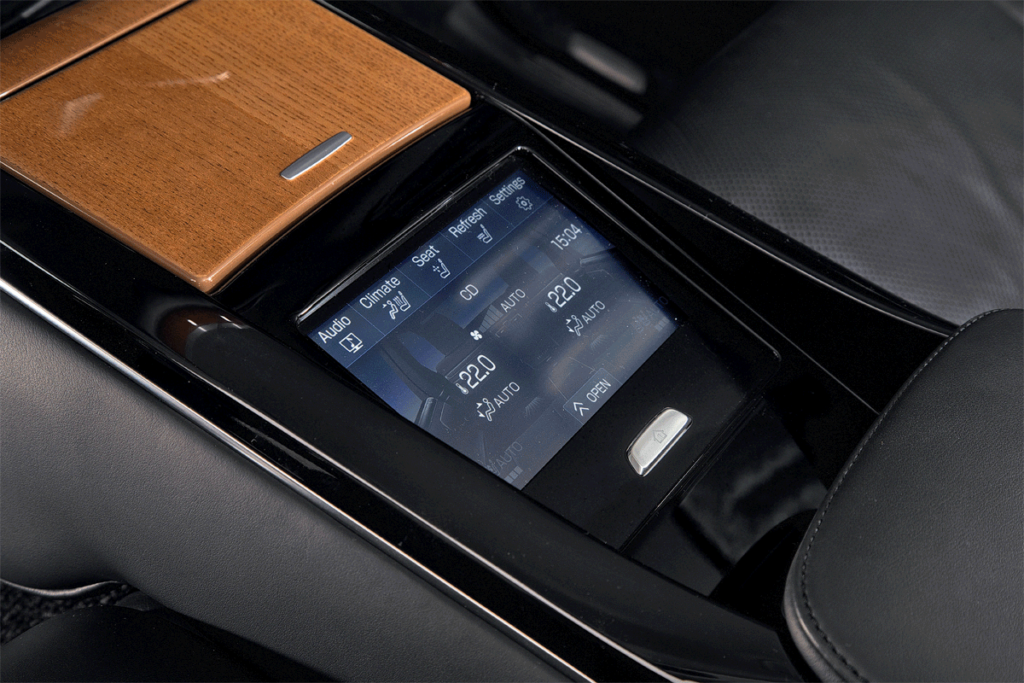
Then there’s the engine—yes, superbly muted. And how wonderful that it’s not completely silenced. Because when you press the gas pedal…
Paradoxically, I found driving the Century more enjoyable than lounging in the back! You might think: right-hand drive, significant dimensions, no visibility to the left during right turns. But… Bliss.

Japan is rainy, so umbrella holders are thoughtfully provided on the pillars.
The Century sets off with distinctive smoothness and near silence, accompanied by a characteristic electronic hum. Its powertrain is by no means antiquated. Like Mercedes engineers selected the tried-and-tested S-Class W140 as the basis for the Maybach V240/W240 in the late ’90s, Toyota opted to retain the “heart” of the previous Lexus LS 600h from 2006 for the third generation of the Century. The new LS had shifted to six-cylinder engines, which would have been too drastic a downsizing for a flagship. Ultimately, they reverted to their roots: a V8, reminiscent of the first generation Century produced from 1967 to 1997.

The electronic floor-mounted gas pedal may lack feedback but sends this hefty sedan forward with delightful ease. And how the naturally aspirated V8 growls with restrained nobility at higher revs—though it’s unclear at what RPM since there is no tachometer.

The black and silver plastic of the shields is set off by a yellow ring of the oil dipstick on the left and bright orange “hybrid” hoses on the right.
However, it’s unnecessary. “The engine’s power is adequate”—this century-old Rolls-Royce maxim fittingly describes the Century too. The 2UR-FSE V8, equipped with Toyota’s signature D-4S combined injection system (both port and direct), delivers just 381 horsepower and 510 Nm but retains all its driver-oriented zeal—in its enhanced 2UR-GSE version, it powers vehicles like the Lexus LC 500 and various F models. An added boost comes from one of two electric motor-generators integrated into the Hybrid Synergy Drive’s planetary variator with a two-stage reduction gear, contributing an extra 224 horsepower and 300 Nm.
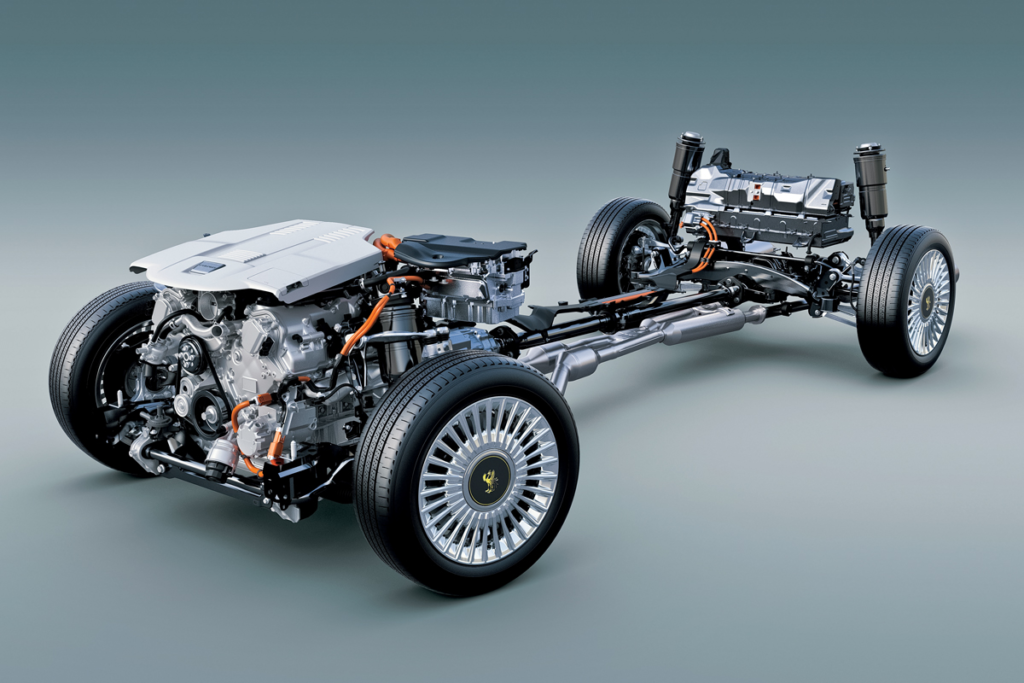
There is little official information about the Century: for example, I did not find any system torque figures, nor any information about the body design or steering. But at its core, this is a 2006 Lexus LS 600h with air suspension and amputated front-wheel drive.
The average fuel consumption figures astonish: 7.9 displayed on the screen! That’s the efficiency of the Atkinson cycle. In more familiar terms, “l/100 km,” it translates to only 12.7. Notably, whereas the Lexus LS 600h featured all-wheel drive with a Torsen inter-axle differential, the Century makes do with just rear-wheel drive.
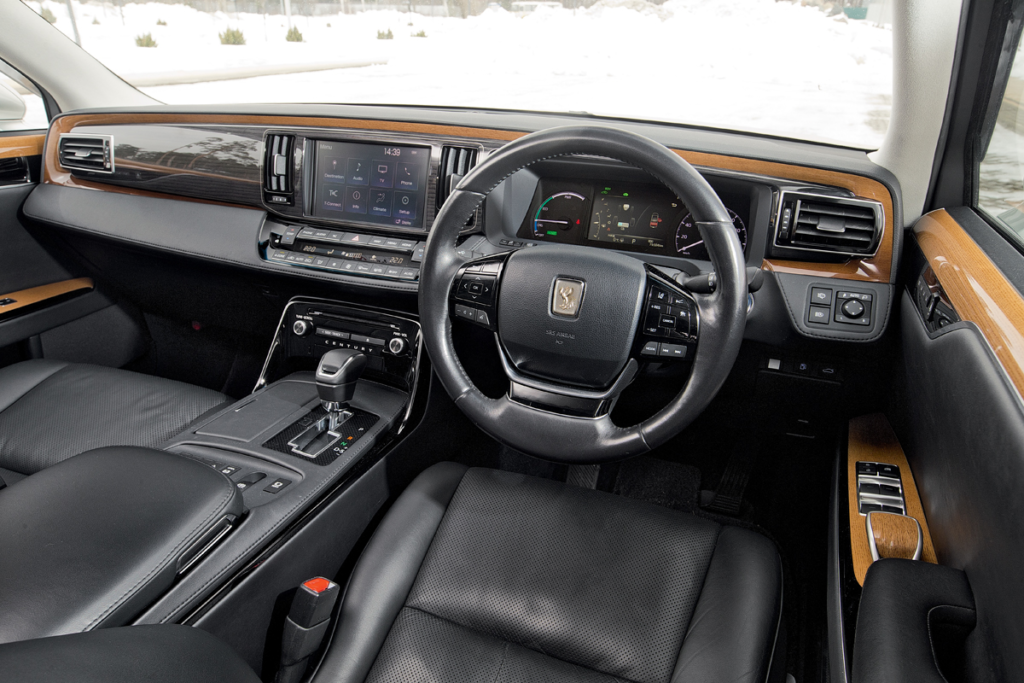
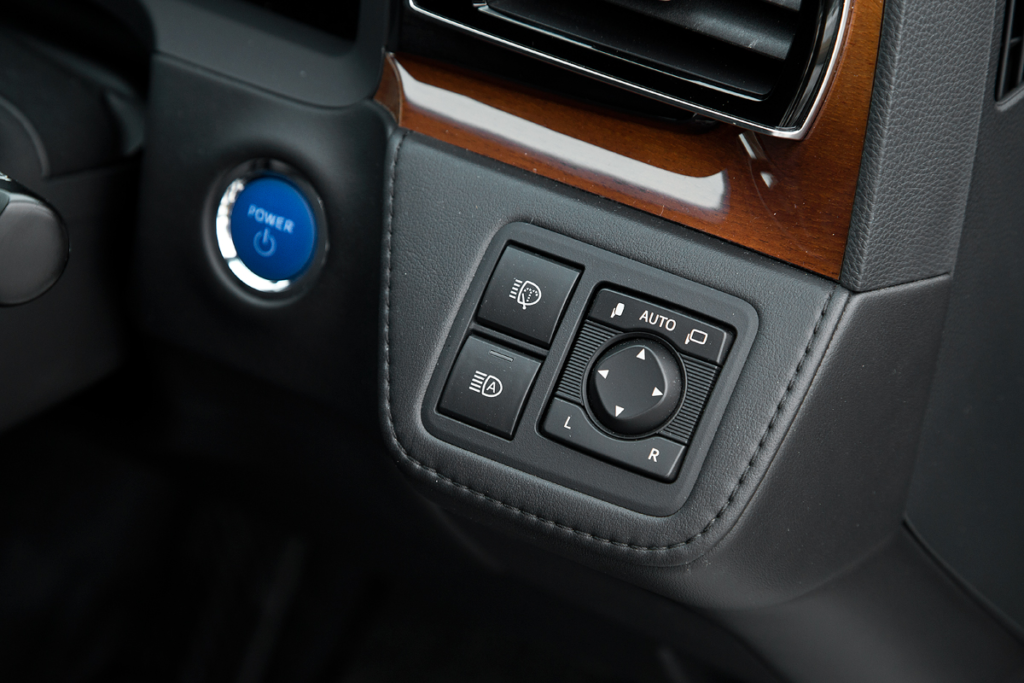

Tokyo drift? No, it’s the Rolls or Bentley that tempts one to swing sideways. Yet, behind the Century’s wheel, such thoughts never arise—it’s akin to driving a highly respected wardrobe. It’s not due to its size or right-hand drive setup. The steering features a wave gear for variable sensitivity, which makes both parking and cruising on highways relaxed endeavors. The steering response is calm and precise, with minimal delay and moderate body roll. But instead of clarity, there’s a viscous, vague resistance. And naturally, cycling through the drive modes in the menu (even a Sport+!) does little to alter this dignified demeanor.

This isn’t akin to German handling but rather evokes the feel of an English luxury car: “a gentleman will walk but never run.” On rural roads, the Century surprisingly feels at home, subtly masking its speed for both the driver and passengers, especially if you overlook the tire noise. There’s nearly always a reserve of power under the pedal—until the traction battery runs low, the electric assist more than makes up for the lack of mechanical supercharging.

Yet, the feedback is lacking everywhere, including the brake pedal, which is excessively spongy and long-travel. Once again, this can be attributed to the notorious hybrid setup.
What then, is the unique appeal of the Century? Like the Phantom, which alongside a superb chassis offers a unique sense of privacy behind its broad pillars, or the Ghost with the world’s finest audio system, the Maybach S-class with unmatched comfort (and excellent handling, whispered), Bentley’s exquisite natural wood trim, and the BMW M760Li’s raw sports performance—the Century has none of these features.

What it does possess, however, is a distinctive aroma—the quintessence of Japan.
Japan has always marveled with its blend of cutting-edge innovation and deep-seated tradition. In 1997, among gray, soot-streaked buildings, a uniform crowd in strict suits bowed deeply to each other, yet clerks on Shinkansen bullet trains worked on laptops tethered to mobile phones. By 2005, Japan had transformed, with designer skyscrapers and bold youth unafraid to stand out. Yet, sushi bar masters in their fifties still regarded themselves as apprentices, only becoming sensei in old age, as they perfected the art of sushi making.
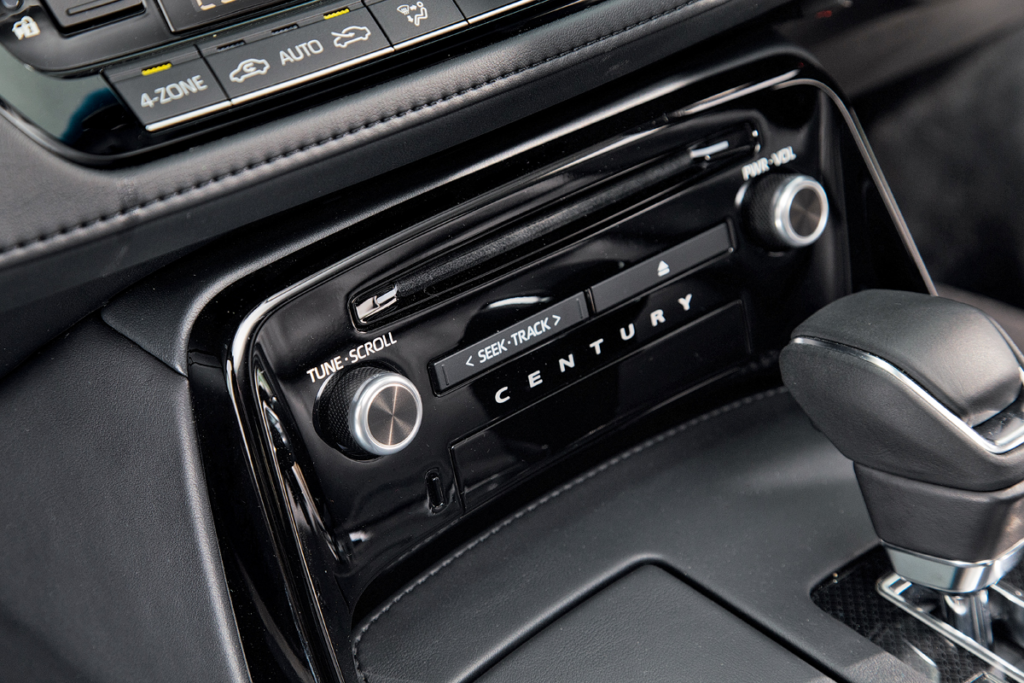
What Japan is now, I do not know; it has been five years since my last visit. But the Century captures the essence of the Japan I remember and cherish.
The Japanese harbor a unique pride and view outsiders from a lofty perch, holding fast to their distinctive values. Clunky design? It conveys tradition and dignity. Lackluster massage features, dim audio systems, minimal automation? Then consider the seven-layer hand-polished paint job.

And the genuine chrome on the radiator grille? Or the phoenix emblem, meticulously carved by a specialist over six weeks?
This emblem has its own tale. It isn’t the phoenix known from ancient Egyptian lore but the Japanese Ho-o bird, which symbolizes not resurrection but serene longevity, perching atop Mount Kunlun and appearing only in times of peace and prosperity.
Wait, China?
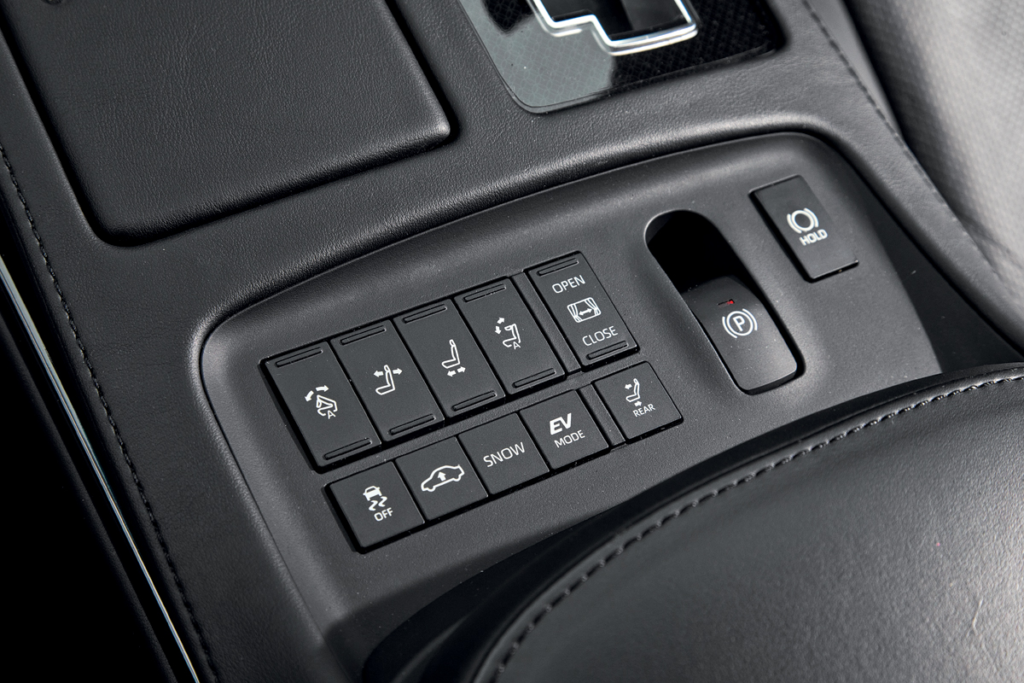
Imagine, the emblem of Japan’s flagship officially features a bird native to China. Early depictions of this bird date back several centuries; the males were named Feng and the females Huang, together known as Fenghuang, which may have inspired the Western phoenix. This bird combines a chicken’s head, swallow’s wings, snake’s neck, hawk’s legs, and fish’s tail—a curious amalgam of different beings. It appears only in places of peace and prosperity, such as at the beginning of a particularly successful Chinese emperor’s reign.
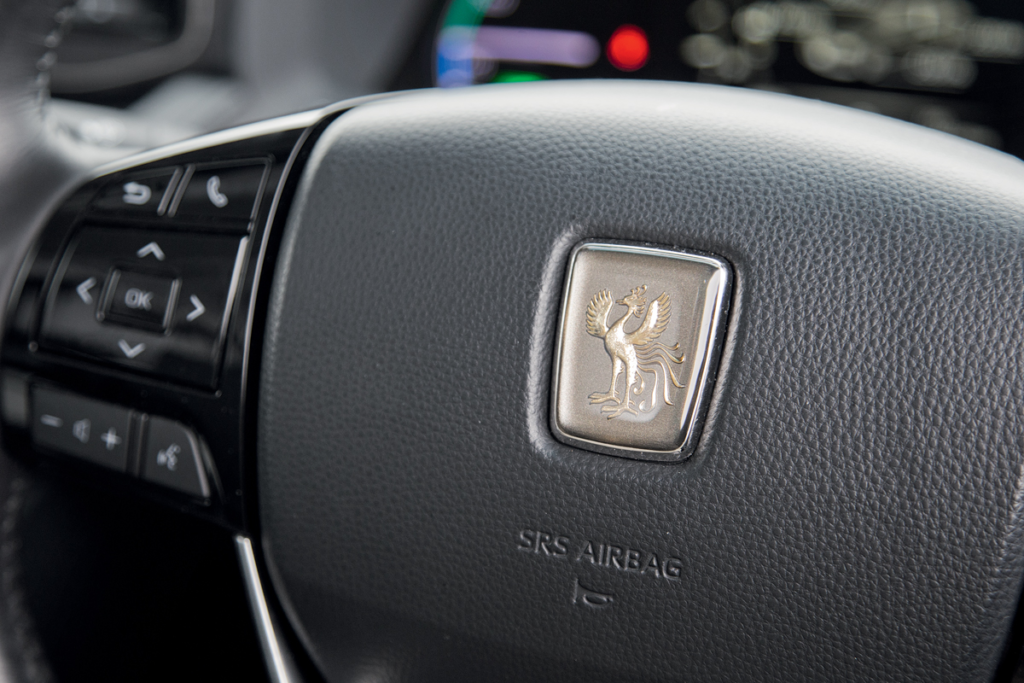
The Japanese, as is typical, creatively adapted these birds much later, around the 6th to 7th centuries AD, turning Fenghuang into Hoo. This bird also heralds the birth of emperors.
What does this have to do with the Century? Firstly, Hoo became a symbol of several imperial households in ancient Japan. Secondly, in 1967, Toyota celebrated the centenary of Sakichi Toyota’s birth, claiming that the bird of happiness then graced the country with its swallow-like wings. Or didn’t Toyota become the world’s largest automobile manufacturer, capturing three-quarters of the domestic market?
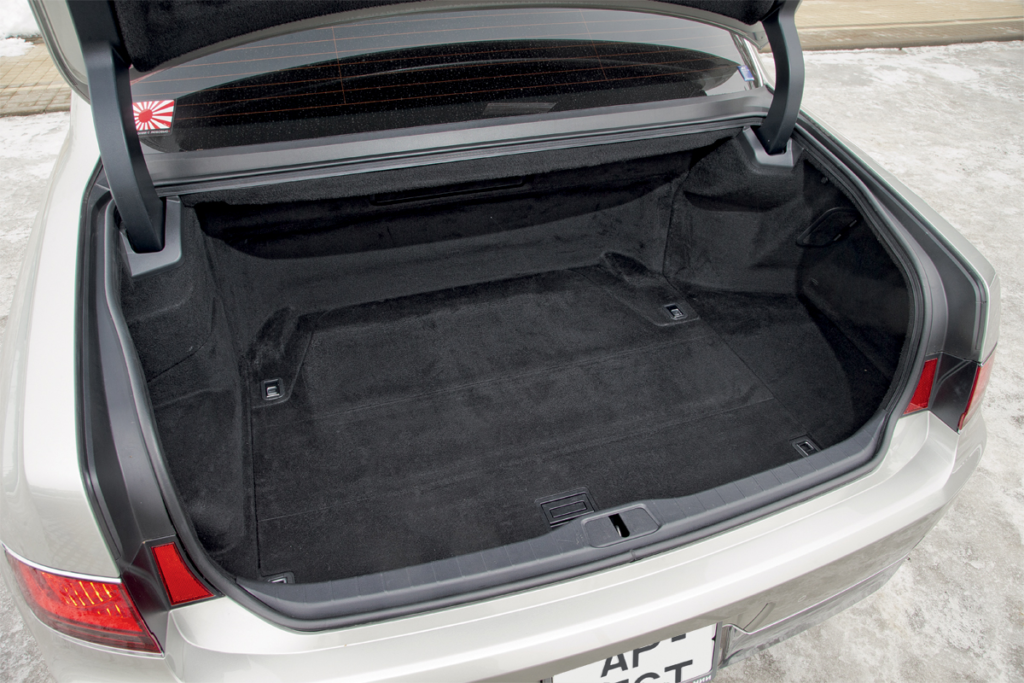
The trunk is a bit small, because a nickel-metal hydride battery is hidden behind a rigid partition of the opening, and a full-size spare tire is in the underground.

By the way, the 18-inch alloy wheels, as Ivan puts it, “cost as much as a downed Boeing.”
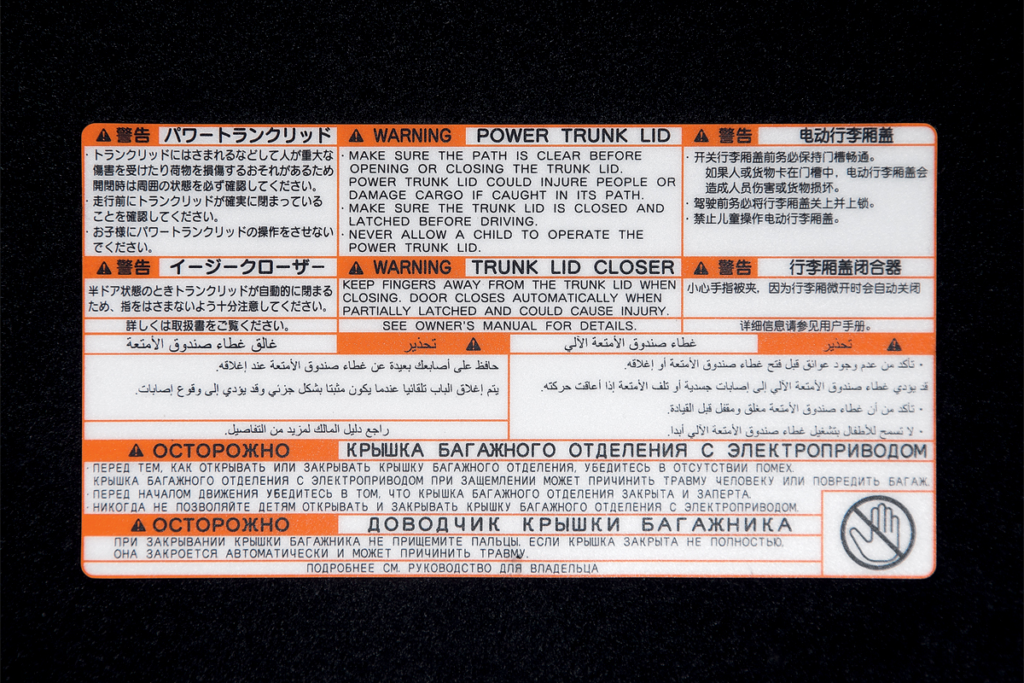
From an external viewpoint, this symbolism might seem a bit peculiar. It’s evident that the Japanese flagship, under the emblem of a Chinese bird of fortune, is several classes below the current cars from China in terms of electronics, suspension comfort, and even massage systems (take the Li L9 for example). Not to mention design.

The “centennial” Toyota Century of 1967 was built on the basis of the large Crown Eight sedan with the first Japanese V8 engine: the body was lengthened by 40 cm (up to 5.12 m), and the engine capacity increased first to 3.0 liters, and then to 3.4 liters. Versions with “mechanics” were produced until 1974, and then only a three-speed “automatic” remained.
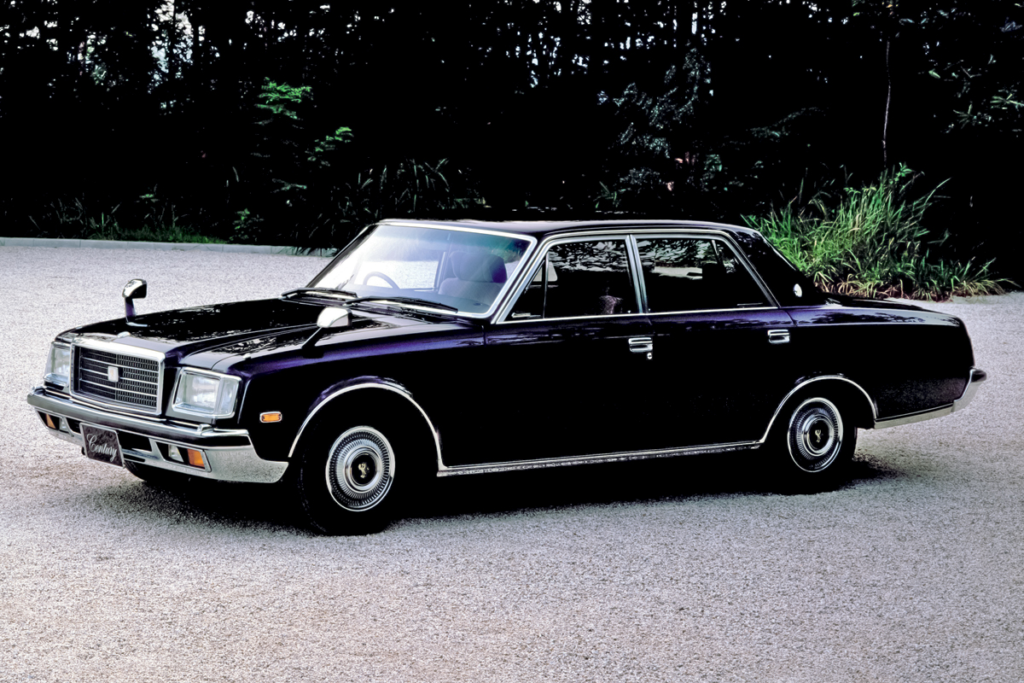
A large-scale restyling took place in 1982, the engine capacity was increased to 4.0 liters. In 1987, the automatic was replaced with a four-speed electronically controlled one, in 1989, a limousine extended to 5.8 m was added, and in 1990, an intermediate L-version 5.3 m long with rear doors from the limousine.

The second generation Toyota Century (1997-2017) with a V12 engine unique to Japan (5.0 l, 280 hp, 460 Nm). Interestingly, in 1998, they tried to sell the Century for export with an engine boosted to 300 hp, including in a left-hand drive version (about 100 cars), but without success.

The three-ton Toyota Century Royal limousine 6.2 m long, based on the second-generation sedan, is still used by Emperor Naruhito. The thresholds are made of natural granite! Three limousines and one hearse were built in 2006-2008.

The new Toyota Century SUV, 5.2 m long, on the GA-K platform: a plug-in all-wheel-drive hybrid with a transverse V6 3.5 engine, McPherson struts in the front and a rear electric motor. System power is 412 hp, electric range is 69 km, price – from 25 million yen ($170,000).
Yet, the Japanese are indifferent. For them, it’s deeply their own story. Century is bought not by those who seek finesse or comfort but by those who have worked hard and achieved everything through sheer perseverance. The retirees of the fading generation, who carried Japan to its financial and industrial heights of the world. The shoguns of zaibatsu, the daimyos of keiretsu. Interestingly, “shogun” is also borrowed, from the Chinese “jiangjun,” meaning “general.”
No doubt, Toyota remains beyond the reach of the Chinese. But they are advancing rapidly. And in Japan, time seems to have stood still, if not regressed.
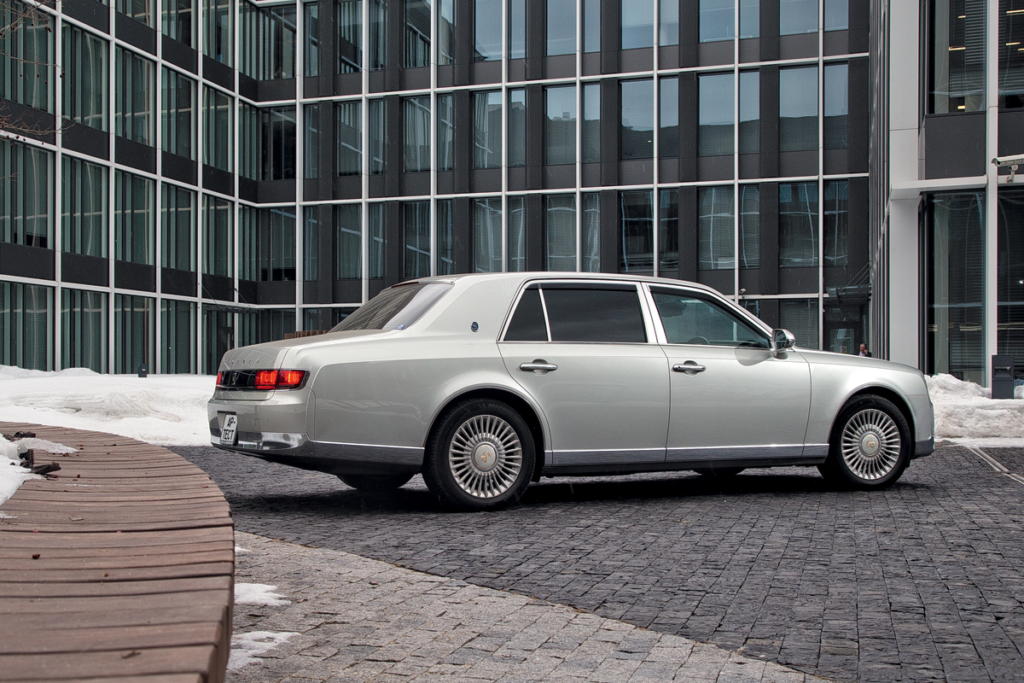
Like in the cabin of the Century.
And I appreciate that. To breathe in this scent—and to be transported to another world where these peculiar people always do things in their unique way. Thus, I do indeed envy Ivan. Especially since he decided to acquire not only this Century but also those of the previous two generations.
I wonder, do their interiors also smell distinctly of Japan?
Owner’s Opinion Ivan, Collector
Century. Say it out loud — do you feel how distinctly Japanese it sounds? Even in its English name, the Japanese have infused their essence. Essentially, this is the most Japanese car in the world.
Yes, it is not perfect, just like any other vehicle: experts from a respected publication might identify a multitude of nuances if they compare the Century to its peers, and their assessments would be entirely accurate. But ultimately, those details are inconsequential.
In its flagship, Toyota finds a way to defend against the necessity of following trends and cutting costs. It’s a classic, much like Beethoven’s “Moonlight Sonata,” which does not age across centuries. Yes, it doesn’t top modern charts or play on every radio from dawn till dusk, but those who understand, those who appreciate true beauty, prefer it to all the superficial glitter.
The essence of the Century is to evoke emotions in both the owner and onlookers. It stands as a model of genuine Japanese quality, which is soon to become legendary in our era of disposable, identical products promoted by marketers. This car is akin to a katana—a symbol of a great industrial nation that melds cutting-edge technology with deep-seated traditions.
Thus, the Century leaves no one indifferent, especially if you get a closer look or take it for a drive. I witnessed the joy on Leonid Golovanov’s face, who, after driving it for the first time, broke into a radiant smile. Such emotions can only be evoked by true masterpieces of automotive art, crafted by engineers who genuinely love people. The same sensation comes from driving perfectly preserved or meticulously restored old Mercedes cars, of which I own several. These vehicles are like diamonds—they may not glitter as brightly under the sun as modern glass facades, but they never lose their allure and value. One must truly be passionate about such machinery to understand this. And that is what I wish for all readers.

Here is the organized table of the Toyota Century’s specifications:
| Specification | Value |
|---|---|
| Car | Toyota Century |
| Body Type | Sedan |
| Seating Capacity | 4 |
| Dimensions (mm) – Length | 5335 |
| Dimensions (mm) – Width | 1930 |
| Dimensions (mm) – Height | 1505 |
| Wheelbase (mm) | 3090 |
| Track front/rear (mm) | 1615/1615 |
| Ground Clearance (mm) | 135—180 |
| Trunk Volume (L) | 484 |
| Curb Weight (kg) | 2370 |
| Gross Weight (kg) | 2645 |
| Internal Combustion Engine | Petrol, with port and direct injection |
| Engine Position | Front, longitudinal |
| Number and Arrangement of Cylinders | 8, V-shaped |
| Engine Displacement (cc) | 4968 |
| Number of Valves | 32 |
| Max Power (hp/kW/rpm) | 381/280/6200 |
| Max Torque (Nm/rpm) | 510/4000 |
| Max Power of Electric Motor (hp/kW) | 224/165 |
| Max Torque of Electric Motor (Nm) | 300 |
| Max System Power (hp/kW) | 431/317 |
| Transmission | Electromechanical variator |
| Drive Type | Rear |
| Front Suspension | Independent, pneumatic, with double transverse arms |
| Rear Suspension | Independent, pneumatic, multi-link |
| Brakes | Ventilated discs |
| Tire Dimensions | 225/55 R18 |
| Max Speed (km/h) | n.d. |
| Acceleration 0-100 km/h (s) | n.d. |
| Fuel Consumption City (L/100 km) | 10.1 |
| Fuel Consumption Highway (L/100 km) | 7.2 |
| Fuel Consumption Combined (L/100 km) | 8 |
| Fuel Tank Capacity (L) | 82 |
| Traction Battery Capacity (kWh) | 1.75 |
| Fuel Type | Gasoline AI-98 |
Photo: Dmitry Piterskiy | Toyota Company
This is a translation. You can read the original article here: Многоуважаемый шкаф: Голованов познакомился с седаном Toyota Century

Published September 04, 2024 • 14m to read

